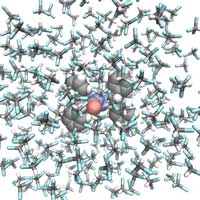 Molecular switches are the molecular counterparts of electrical switches and play an important role in many processes in nature. Nanotechnologist now produced a photographic film at the atomic level and thus tracked the motion of a molecular building block.
Molecular switches are the molecular counterparts of electrical switches and play an important role in many processes in nature. Nanotechnologist now produced a photographic film at the atomic level and thus tracked the motion of a molecular building block.
Thursday, June 18, 2020
Researchers create a photographic film of a molecular switch
 Molecular switches are the molecular counterparts of electrical switches and play an important role in many processes in nature. Nanotechnologist now produced a photographic film at the atomic level and thus tracked the motion of a molecular building block.
Molecular switches are the molecular counterparts of electrical switches and play an important role in many processes in nature. Nanotechnologist now produced a photographic film at the atomic level and thus tracked the motion of a molecular building block.
Graphene smart textiles developed for heat adaptive clothing
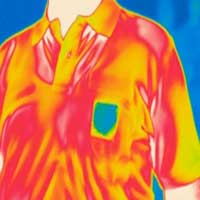 New research on the two-dimensional material graphene has allowed researchers to create smart adaptive clothing which can lower the body temperature of the wearer in hot climates.
New research on the two-dimensional material graphene has allowed researchers to create smart adaptive clothing which can lower the body temperature of the wearer in hot climates.
Towards ultra-sensitive diagnostic chips
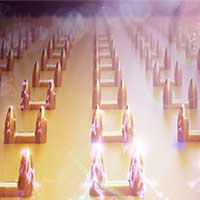 Researchers have developed an ultra-thin nanostructure gold film with the potential to revolutionise next-generation bio-sensing chips.
Researchers have developed an ultra-thin nanostructure gold film with the potential to revolutionise next-generation bio-sensing chips.
Graphdiyne as a functional lithium-ion storage material
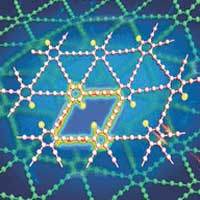 Graphdiyne is as flat and thin as graphene, which is the one-atomic-layer-thin version of graphite, but it has a higher porosity and adjustable electronic properties. Researchers describe its simple bottom-up synthesis from tailor-made precursor molecules.
Graphdiyne is as flat and thin as graphene, which is the one-atomic-layer-thin version of graphite, but it has a higher porosity and adjustable electronic properties. Researchers describe its simple bottom-up synthesis from tailor-made precursor molecules.
Molecular robot swarms
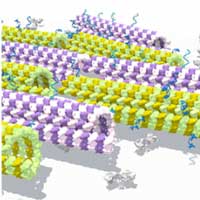 Scientists are looking for ways to make millions of molecule-sized robots swarm together so they can perform multiple tasks simultaneously.
Scientists are looking for ways to make millions of molecule-sized robots swarm together so they can perform multiple tasks simultaneously.
Laser technology: The turbulence and the comb
 So-called frequency combs play a major role in laser research today. Scientists now succeeded in producing this special kind of light, using simple circular quantum cascade lasers - a result that seemed to contradict conventional laser theories completely.
So-called frequency combs play a major role in laser research today. Scientists now succeeded in producing this special kind of light, using simple circular quantum cascade lasers - a result that seemed to contradict conventional laser theories completely.
2D Metallene electrocatalysts developed for electrochemical CO2 reduction
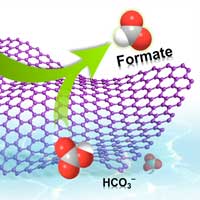 As a newly emerging two-dimensional material, the metallenes with ultrathin morphology will enable a superhigh atomic utilization for catalysis, leading to the partial homogenization of such heterogeneous catalysts, presenting great potentials in electrocatalytic CO2 reduction reaction.
As a newly emerging two-dimensional material, the metallenes with ultrathin morphology will enable a superhigh atomic utilization for catalysis, leading to the partial homogenization of such heterogeneous catalysts, presenting great potentials in electrocatalytic CO2 reduction reaction.
Nanosafety research without animal experiments
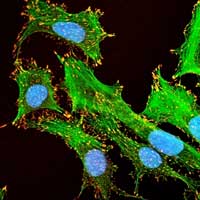 In order to reduce the number of animal experiments in research, researchers are now combining test tube experiments with mathematical modelling.
In order to reduce the number of animal experiments in research, researchers are now combining test tube experiments with mathematical modelling.
Adhesive film turns smartwatch into biochemical health monitoring system
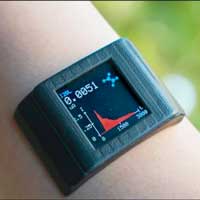 Engineers have designed a thin adhesive film that could upgrade a consumer smartwatch into a powerful health-monitoring system. The system looks for chemical indicators found in sweat to give a real-time snapshot of what's happening inside the body.
Engineers have designed a thin adhesive film that could upgrade a consumer smartwatch into a powerful health-monitoring system. The system looks for chemical indicators found in sweat to give a real-time snapshot of what's happening inside the body.
Subscribe to:
Comments (Atom)
